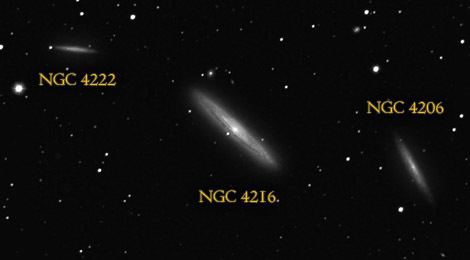Right ascension 12 15 54.4 Redshift 131 ± 4 km/s Type SAB(s)b Magnitude 11 Apparent magnitude (V) 11 | Declination +13° 08′ 58″ Distance 55 Mly Apparent size (V) 8′.1 × 1′.8 | |
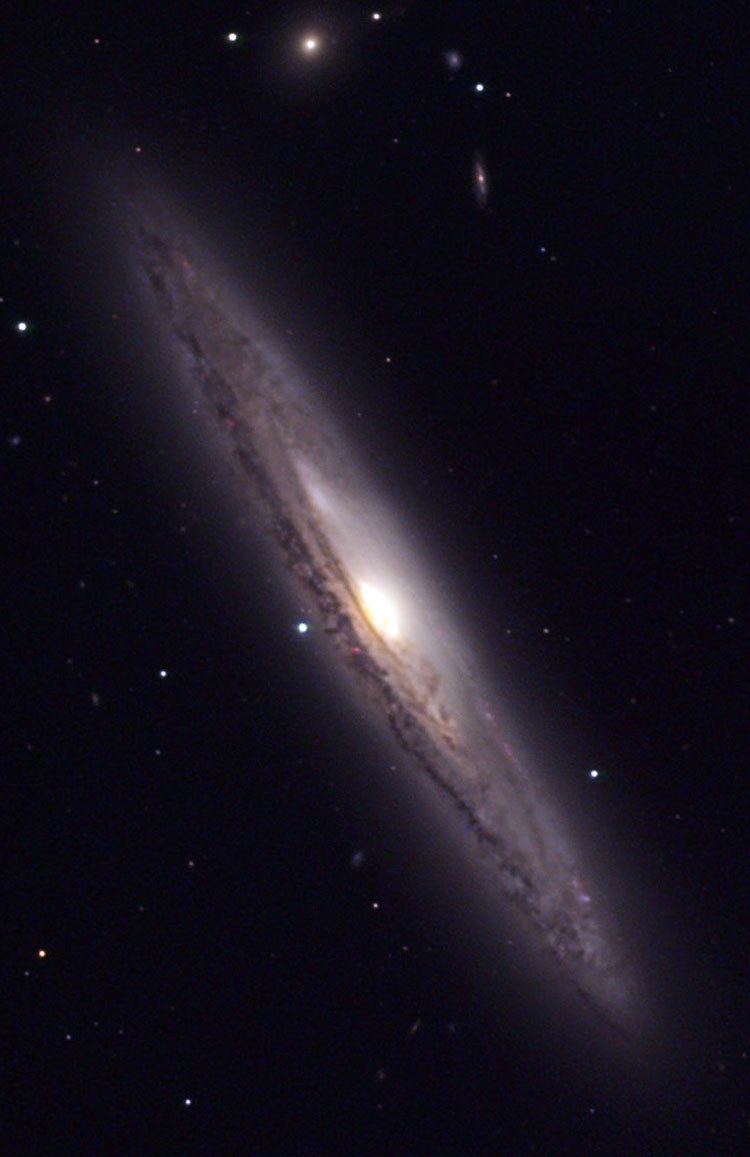 | ||
Similar NGC 4206, NGC 4429, NGC 4293, NGC 4450, NGC 4088 | ||
NGC 4216 is a metal-rich intermediate spiral galaxy located not far from the center of the Virgo Cluster of galaxies, roughly 55 million light-years away. It is seen nearly edge-on.
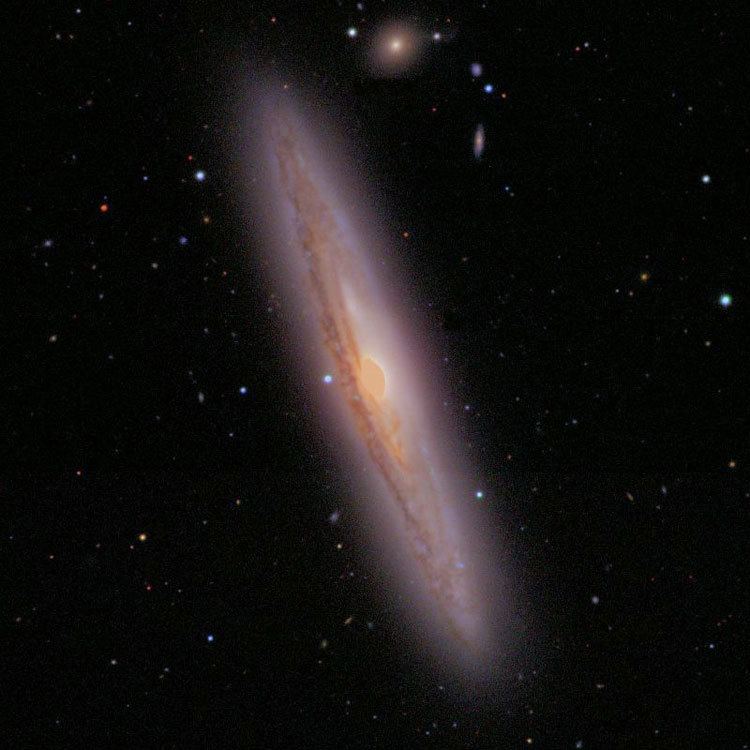
Physical characteristics
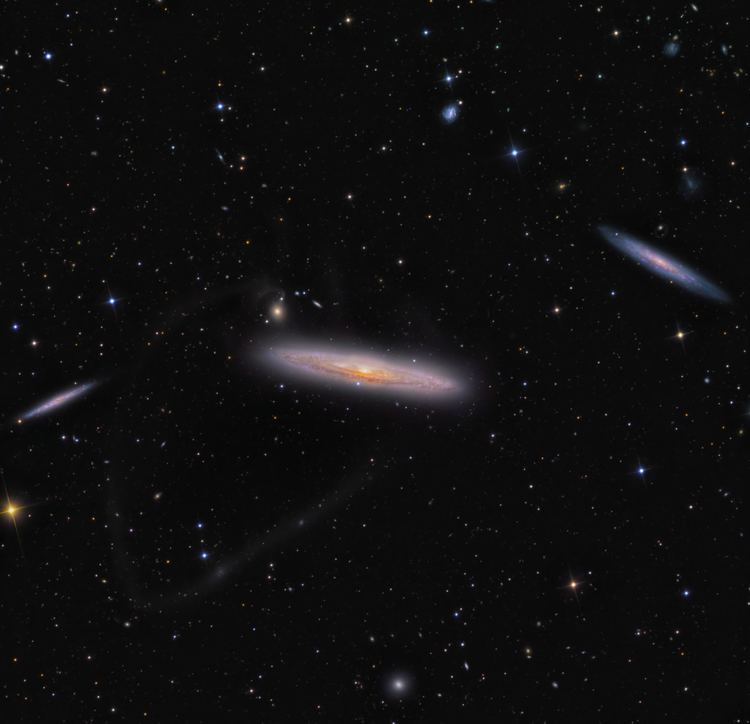
It is one of the largest and brightest spiral galaxies of the Virgo Cluster, with an absolute magnitude that has been estimated to be -22 (i.e.: brighter than the Andromeda Galaxy), and like most spiral galaxies of this cluster shows a deficiency of neutral hydrogen that's concentrated within the galaxy's optical disk and has a low surface density for a galaxy of its type., something that explains why is considered an anemic galaxy by some authors, also with a low star formation activity for a galaxy of its type. In fact, its disk shows pillar-like structures that may have been caused by interactions with the intracluster medium of Virgo and/or with nearby galaxies
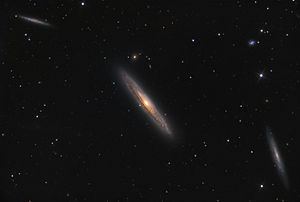
In NGC 4216's halo, besides a rich system of globular clusters with a number of them estimated in around 700 (nearly five times more than the Milky Way),two stellar streams that are interpreted as two satellite galaxies being disrupted and absorbed by this galaxy are present.
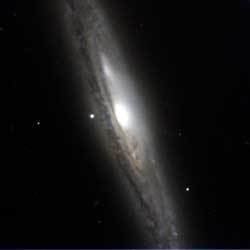
NGC 4216 seems to be in a place of the Virgo cluster where dwarf galaxies are being destroyed/accreted at a high rate, with it suffering a large number of interactions with these type of galaxies
